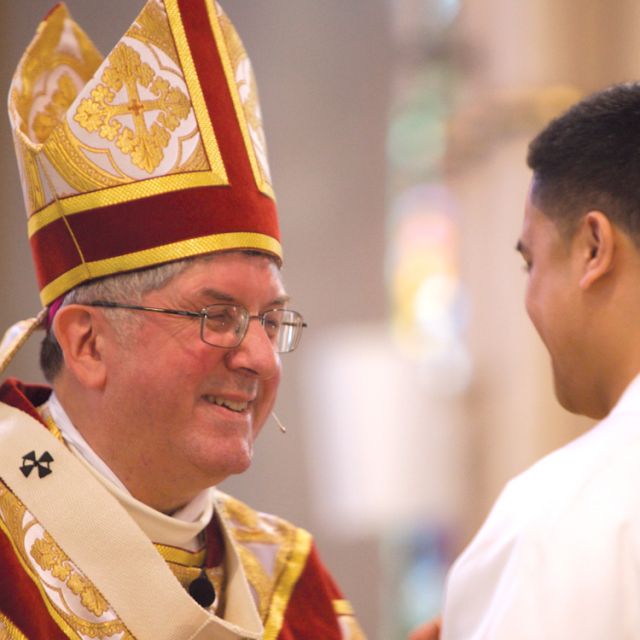When Collins was archbishop of Edmonton, I accepted an invitation to give a talk there in January. I grew up in Calgary; I know the prairie winter, but accepted nonetheless. Archbishop Collins, perhaps lacking visitors to Edmonton at that time of year, kindly invited me to stay at his home. The morning of the talk, we were preparing to leave for an early Mass. It was pitch black outside and at least -30. He looked at me, travelling light with an overcoat and leather gloves and announced that wouldn’t do. Into the closet he went and quickly produced a parka, down-filled gloves, a scarf and a toque. It was like being back in second grade, with a concerned teacher making sure the children were properly bundled up (in Edmonton, unlike Toronto, kids still go out for recess when it is bone-chillingly cold).
Neither of us looked very elegant, but it was the right thing to do. There is much bella figura that goes with being a cardinal. Some coverage even makes it seem as if it is principally an occasion for fancy dress. Cardinal Collins will not be indulging in all that. He will of course wear what is appropriate to his office, but if the weather and common sense call for wearing a toque, he will. And because he cares about his friends, he will make them wear one too! Firm solicitude for his flock, humble and unpretentious, is the type of bishop he is.
Some people like to send
a new bishop or cardinal the gift of a zucchetto, the skull cap that prelates wear, but I hope at least one Edmontonian sends Cardinal Collins a red toque as a cardinalatial gift.
It is not just the new cardinal’s head that will get a makeover in red, but also his chair. In a cathedral, the bishop’s chair (cathedra, in Latin, from which we get the word cathedral) usually includes his coat-of-arms. In archdioceses where the archbishop is customarily made a cardinal, often the cathedra itself reflects that the archbishop has been created a cardinal. For example, in New York’s Cathedral of St. Patrick, the great carved wooden cathedra remains the same, but the dais on which it sits is changed from green carpeting to red.
Toronto being an eminently practical place, they keep two chairs for St. Michael’s Cathedral. One cathedra is upholstered in green, the other in red. Now that the archbishop is being made a cardinal, the green will go back in storage and the red will be brought out. It goes back and forth. From 1990 until 1998, the green cathedra was used, and when Aloysius Ambrozic was made a cardinal in 1998, the red one was used. Since 2007, when Archbishop Collins took over, the green has been used. Soon it will go, and the red will be back.
There is a lesson in that. The chairs come and go, but the church around them remains. No bishop is forever. Cardinals are created, they retire, they die. The Church continues. Even the great honour of being a cardinal is not permanent, and the day will come when Cardinal Collins no longer has a chair in St. Michael’s.
Cardinal Collins will be the 16th Canadian cardinal. The first one is a figure of obscurity, having never been in Canada. Thomas Weld was an Englishman, appointed coadjutor archbishop of Kingston in 1826. Ill health prevented him from coming to Canada, but he was made a cardinal in 1830. It was likely a test to see what the reaction in England would be, where the hierarchy had still not been restored after the Reformation, and would not be until 1850. So it was an honour without responsibility. That won’t be the case for Canada’s 16th cardinal.
That the Holy Father has deigned to confer the red hat on an outstanding churchman is cause for rejoicing. But I think it’s the toque that that explains why he is worthy.



